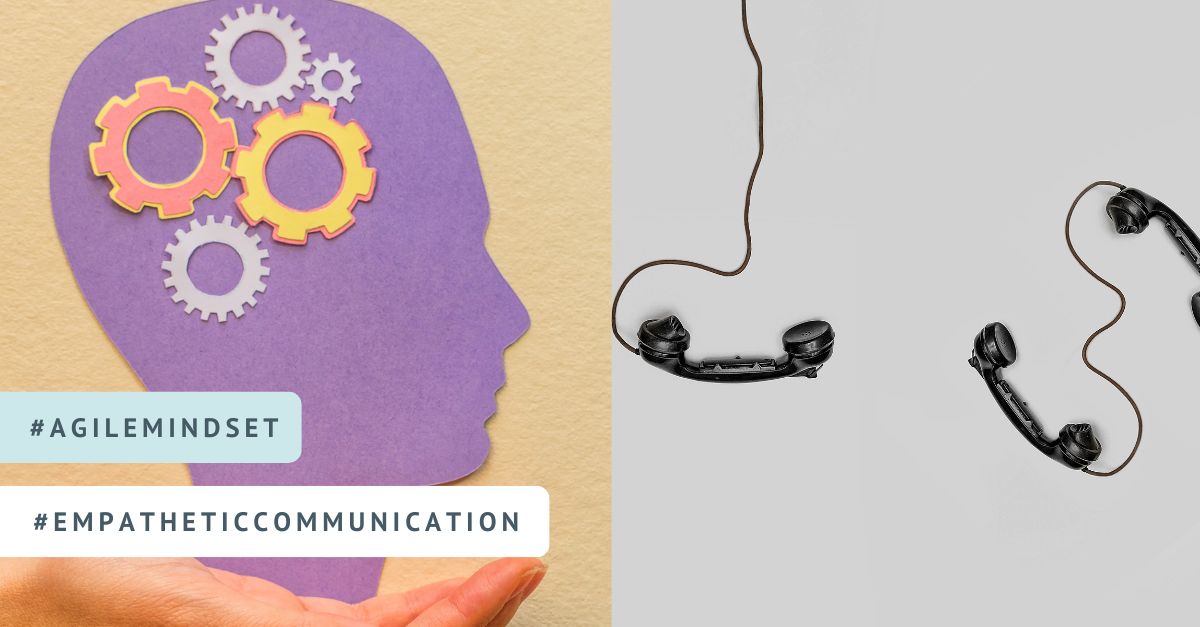
Our Words Fuel Our Intentions
During the workshop, sandwiches were served, which the group pounced on. I stood to one side because I was on a gluten-free diet when one of the people in the room offered me a banana. At a playgroup, a little boy struggled to balance a block atop a tower. Seeing his frustration, another child stepped in to help, gently guiding his hand until together they turned a moment of stress into a triumph of collaboration. These simple acts of empathy speak volumes: whether in a playground or a workplace, the way we communicate and support each other defines our success. Words carry energy – they can uplift or erode, inspire action or instill doubt. In teams especially, our words fuel our intentions, setting the tone for collaboration, innovation, and outcomes. This article explores how language shapes action in personal and professional settings, why the Agile mindset prizes empathetic communication, and how choosing kindness and clarity over aggression leads to better teamwork and results.
The Power of Language and Intent
The language we use doesn’t just convey information – it actively shapes our reality and intentions. Neuroscience tells us that words can literally rewire our brains: positive, encouraging language activates reward centers, reducing stress, while negative or hostile words trigger the release of stress hormones and impair logical thinking. In other words, a single discouraging remark can put someone in “fight-or-flight” mode, whereas an encouraging word can boost confidence and focus.
“The words we choose don’t just describe our reality—they create it”
Our everyday interactions reflect this truth. Think of how a heartfelt “I believe in you” can motivate someone to persevere, or how framing a challenge as an “opportunity” rather than a “problem” can fuel a team’s creative intent. The language we choose – whether setting personal goals or working with colleagues – primes our mindset for action. By using words aligned with positivity, possibility, and respect, we actively fuel intentions toward growth and success. Conversely, harsh or careless words can undermine morale and sow doubt, derailing those intentions. In both life and work, words are sparks that ignite action – and in Agile teams, every spark counts.
Communication and the Agile Mindset
Agile methodologies recognize that human communication is the heartbeat of effective teamwork. In fact, the very first value of the Agile Manifesto is “Individuals and interactions over processes and tools,” emphasizing people and effective communication above rigid procedure. This means Agile teams thrive when open dialogue, trust, and understanding are prioritized. Agile frameworks like Scrum institute frequent touchpoints – daily stand-ups, sprint plannings and reviews, retrospectives – all of which rely on honest, clear communication.
The Agile mindset views language as a tool to foster transparency and alignment: goals are shared often, feedback is exchanged continuously, and issues are discussed openly rather than hidden. A culture of “high-frequency, two-way communication” is essential to gather feedback and adapt quickly. In practice, that could mean a developer explaining a technical challenge in plain language so everyone can help, or a product owner actively listening to the team’s concerns. When team members feel heard and information flows freely, Agile values come to life – collaboration replaces silos, and responding to change becomes natural. Effective communication in Agile isn’t just about talking more; it’s about speaking with intention. By focusing discussions on purpose and understanding (for example, using user stories to clarify why a feature matters), Agile teams ensure that their words drive coherent action towards shared goals. In short, Agile’s emphasis on individuals and interactions acknowledges that the way we communicate directly shapes our team’s ability to deliver value.
Empathetic Communication vs. Confrontational Styles
How we say something can be just as important as what we say. Empathetic communication – rooted in respect, active listening, and kindness – fuels a productive, innovative atmosphere far more effectively than aggressive or confrontational styles. When communication is intentional and empathetic, it strengthens team bonds and creates an environment of trust and psychological safety. In such an environment, team members feel safe to voice ideas or admit mistakes without fear, which is critical for Agile success. By contrast, hostile or harsh communication breeds fear and defensiveness, causing people to shut down or avoid risks.
Consider the findings of Google’s Project Aristotle: after studying hundreds of teams, Google researchers found that the number one predictor of high performance was psychological safety – a climate where people feel confident they won’t be punished or humiliated for speaking up or trying something new. That kind of safety is only fostered when team members and leaders communicate with empathy and respect. It’s no surprise that management research calls empathy a workplace “superpower.” Teams with empathic leadership report higher morale and far more innovation and creative risk-taking. Employees who feel understood by their managers are less stressed and more willing to go the extra mile, leading to better performance. On the other hand, an aggressive management style – full of blame or sharp criticism – can increase anxiety and stifle the flow of ideas.
Traditional vs. Agile Language
| BUSINESS AS USUAL | AGILE |
|---|---|
| What is the project timeline? | How quickly can we deliver a Minimum Viable Product (MVP) or a working prototype? |
| What is the status of this project? | What would enable you to move faster? How confident are you in our current approach? |
| Why are you late to this milestone? | What obstacles are in your way that I can help remove? Which tasks can we deprioritize to stay on track? |
| What is the return on investment for this project? | How soon can we engage the customer to gather feedback and validate our assumptions? |
| What is the total full-time equivalent for the project? | Do we have a fully dedicated team assigned to this effort? |
Fostering an Empathetic Agile Culture
Developing an empathetic communication style in your team is a journey, but it’s one with profound rewards. By consciously choosing words and interactions that align with Agile values of respect and collaboration, leaders and contributors alike can create a culture where language drives positive intent. Here are a few practices to fuel your Agile team’s success through better communication:
- Embrace Open Dialogue
Encourage a norm that every question or concern can be voiced. Agile thrives on “individuals and interactions” – make space in stand-ups and meetings for people to speak and listen without interruption. - Practice Active Listening and Compassion
During discussions, listen to understand, not to rebut. Respond to teammates’ ideas and feelings with empathy – a simple acknowledgement like “I see why that’s important to you” can go a long way. Compassionate, non-judgmental listening creates psychological safety where problems are addressed, not hidden. It also helps de-escalate conflicts and keeps everyone focused on solutions rather than personal attacks. - Use Intentional, Positive Language
Words set the stage for how the team approaches work. Try framing goals and feedback in constructive terms. - Model Empathy in Leadership
Leaders and Scrum Masters should exemplify the tone they want to see. By handling setbacks with calm understanding and recognizing team members’ efforts regularly, leaders show that empathy is valued. - Foster Collaborative Language
In an Agile team, use language that reinforces togetherness. Replace “you vs. me” phrasing with “we” and “us.” For instance, “How can we achieve this?” invites partnership, whereas “You need to achieve this” isolates and pressures. By choosing inclusive pronouns and acknowledging collective ownership of outcomes, teams signal that everyone is in it together. This subtle shift builds trust and a shared intentionality toward success.
Conclusion
The words we speak in our teams shape the reality we create. In an Agile context of fast-moving parts and constant learning, communication is the fuel that keeps the engine running smoothly. When that fuel is rich with empathy, respect, and clarity, it propels teams to heights of collaboration and innovation that no Gantt chart or technical plan alone could achieve.
Our words become our reality – so let’s choose them to build the inspiring, collaborative future we intend to see.
If you are interested in agility and teamwork, join our courses and programmes.
Get ready for CAPM® certification
If you are a beginner project manager or want to upgrade your skills join our upcoming PMI® Authorized Certified Associate in Project Management (CAPM)® Exam Prep Course.
Prepare for PMP® certification.
If you already have more project management experience sign up for our upcoming PMI® Authorized PMP® Exam Prep Course and receive the Agile in Practice workshop for free.
Additional Materials

Sign up for our newsletter. Each week you will receive a letter from us with articles worth reading, tools for working with teams, tips and interesting facts about project management.


